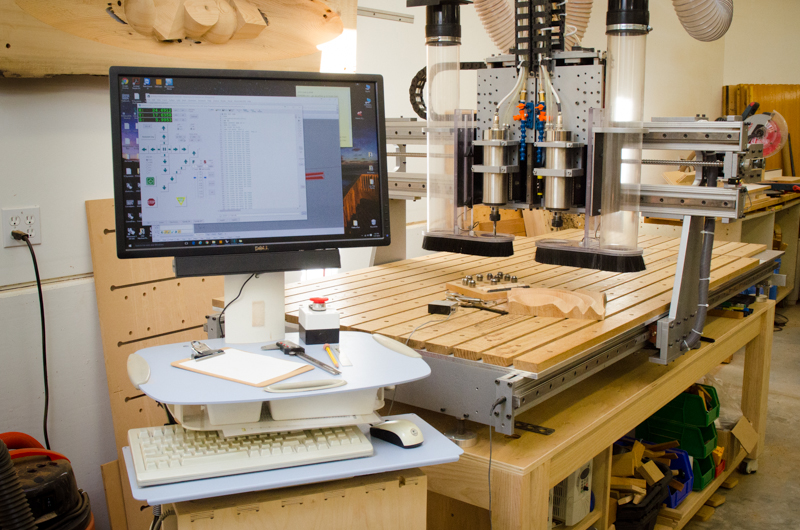We may receive a commission when you use our affiliate links. However, this does not impact our recommendations.

The home position is the default origin point on a CNC, set when the machine is started up. On my custom CNC, the corner at the bottom of the photo is my machine’s home position.
I need to cover a few CNC basics so, bear with me. There’s a big payoff coming.
Most current CNCs have a startup routine where the machine goes to the extents of each axis, does a little dance and ends up in what’s usually referred to as the “home” position. It’s at an extreme position on the table. Usually, but not always, the CNC sets both the X and Y axis to 0. All numbers grow from here in the positive direction.
Near the physical limits of each axis, the machine trips what is referred to as a “limit switch”. This is a mechanical, optical, or magnetic switch or an electronic sensor. Once the limit is hit, a simple circuit is completed, the machine stops or briefly changes direction and resets the numbers on the Digital Read Out or DRO on the screen or controller to “0/0”. This is the home position — the default “origin point” for a CNC.
The home position is the default origin point on a CNC
I mentioned in earlier posts that you can set your “origin” anywhere you want, but the home position is special and offers several interesting benefits to a CNC user. For one thing, depending on the accuracy of the machine — many are .001”-.003”, the home position offers a consistent, physical location on your CNC. And, if you have one and know how to put to use, it can be a very useful thing.
When it comes to origin positions, most CNC users think about two obvious benefits offers: accurate positions relative to the work being machined and accurate motion. But when you set an origin point origin point for the task at hand, it’s relative only to where you apply it. But, a home position is different than a movable origin point. It’s universal and it’s always there. It’s a repeatable position that you can go back to every time you turn the machine on. With the available .001” precision, you can put it to work and create an accurate, real-world, physical workspace on the CNC bed that matches the CNC to become the stepping-off point for some very useful new setups, jigs, tools, and features — tricks that very few users seem to be aware of that make using CNC faster, more accurate and much easier — particularly for digital woodworkers. Bonus: it makes using a CNC a lot more fun.

Home positions are not always in a convenient place. In the case of the Laguna IQ deck, the home position is 4″ off the edge. Note the green spot with the target in the lower left. I plotted and measured the exact home location as I’ll use it for the modifications that greatly improve the day-to-day use of this CNC.
One more thing. For those of you that have CNCs that don’t have a startup routine using limit switches and a home position, fear not. You can create a one. I’ll explain how in another post.
Much more on this topic in coming blog posts. Stay tuned.
Additional Resources
- Digital Woodworking on Instagram
- Personal Work on Instagram
- Digital Woodworking YouTube Channel
Here are some supplies and tools we find essential in our everyday work around the shop. We may receive a commission from sales referred by our links; however, we have carefully selected these products for their usefulness and quality.








